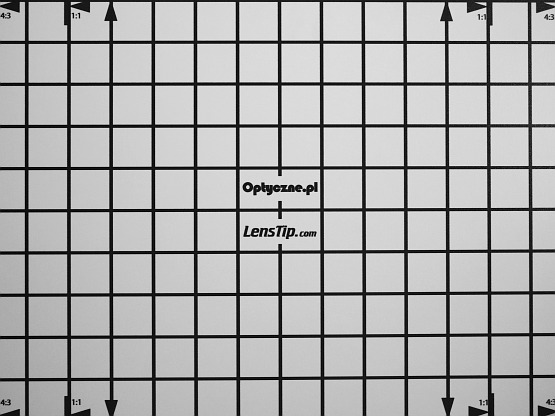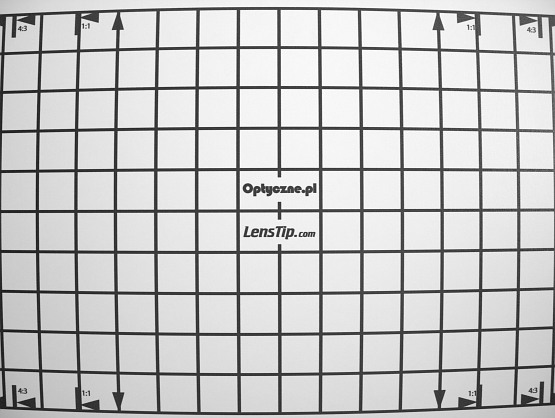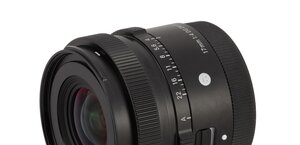Panasonic G 20 mm f/1.7 ASPH.
6. Distortion
 |
The situation changes diametrically if you see RAW files developed by a neutral program. For such parameters the optics generates very high barrel distortion of –3.66%. In the case of a lens which aspires to be a standard device we would be able to forgive a distortion level of
–1.5% at most. The result of – 3.66% deserves a lot of criticism.
Please Support UsIf you enjoy our reviews and articles, and you want us to continue our work please, support our website by donating through PayPal. The funds are going to be used for paying our editorial team, renting servers, and equipping our testing studio; only that way we will be able to continue providing you interesting content for free. |
- - - - - - - - - - - - - - - - - - - - - - - - - - - - - - - - - - - - - - - - - - - - - - - -
 |
The tests of other Micro 4/3 system lenses show that the optics constructors of Olympus and Panasonic eased up on the distortion correction. They assumed, and they were quite right by the way, that such an aberration can be corrected easily by different programs. We must keep in mind, though, what price is to be paid. The distortion-corrected image is cropped afterwards and it causes the reduction of the field of view, sometimes quite significant. However, in the case of the Panasonic 1.7/20 such price is low because a slight narrowing of the field of view makes the lens even more similar to the standard full frame 50 mm device. If you want to be honest you must also mention the advantages of such a solution. A typical lens project is always a kind of compromise between physical dimensions, price and the quality of optics in terms of correcting basic optical aberrations. When we ease up on the distortion correction completely we get additional degree of freedom so to speak, which can be used to correct other aberrations more efficiently or to lower the price and dimensions of a lens. There’s some logic in such a move, especially if you take into account the fact that most of amateur photographers who take photos in JPEG format, will never guess that their camera corrects the lens’s distortion automatically and because of that the field of view is narrower than that given in the lens’s specifications.






